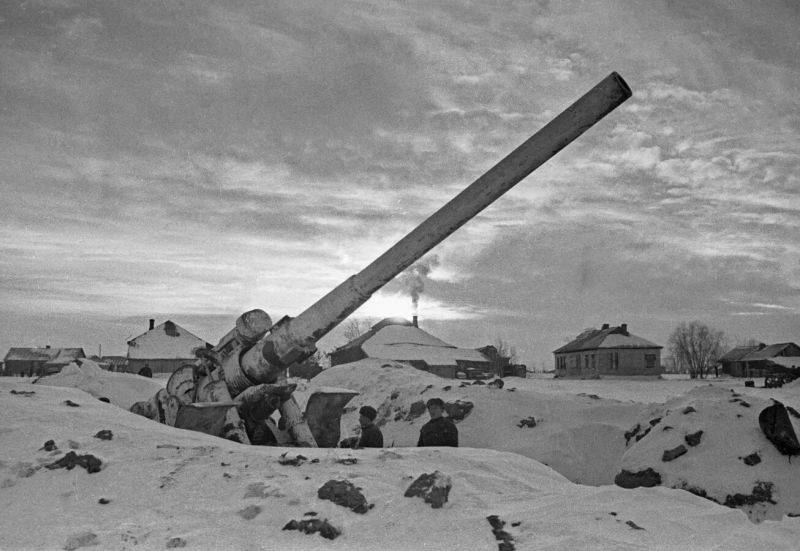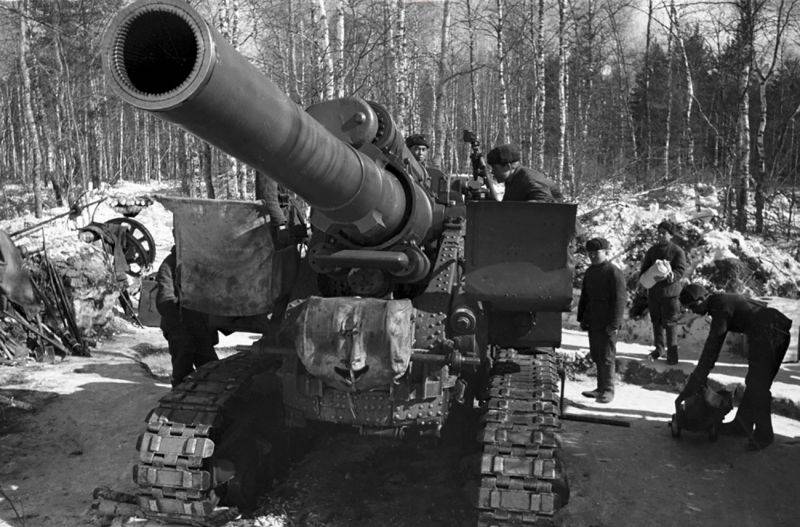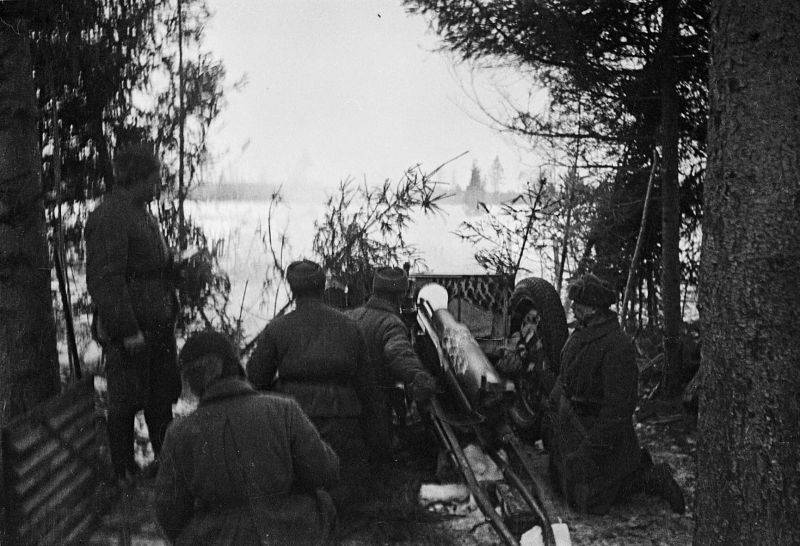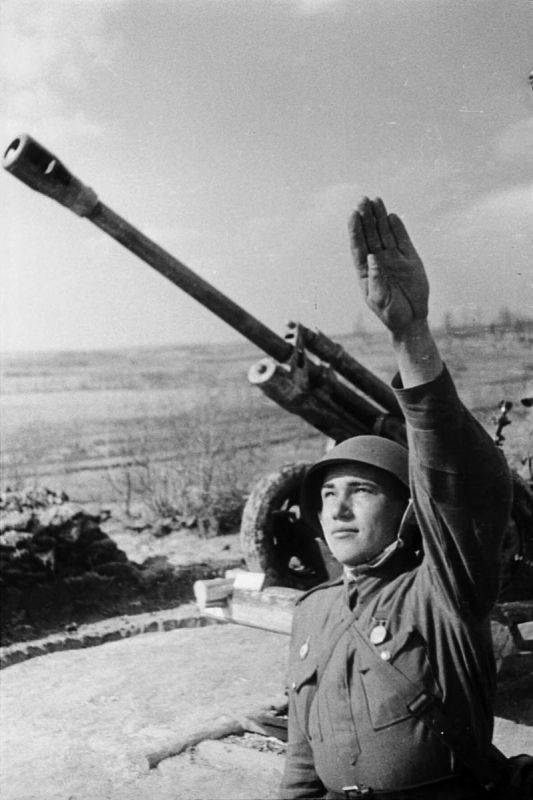About the "shell hunger" in the Red Army

Soviet 152-mm cannon model 1935 Br-2 at a firing position on the outskirts of Moscow. November 1941
Pre-war mistakes
At the beginning of the war, there was a shortage of both special types of shells and ammunition in general. This became one of the prerequisites for the heavy losses and defeats of the Red Army in the initial period of the war. This situation was eliminated during 1942 - the first half of 1943, when a radical turning point in the war occurred.
One of the pre-war problems of the ammunition industry was the personnel problem - the formation of qualified management personnel. The country was created literally from scratch. There was a shortage of qualified managers and scientific personnel.
This led to errors in the organization of the technological process at enterprises and in the coordination of their activities with other branches of heavy industry. In particular, the management of ammunition factories deliberately violated the technological process in order to reduce production time. This was manifested in the manufacture of shells and in the equipment production. Enterprises often produced those products that were financially profitable, which led to the sabotage of government orders. In order not to spoil the performance of advanced factories, the development of the production of new ammunition elements was transferred to more backward enterprises. For example, this led to a shortage at the beginning of the war of much-needed 76-mm armor-piercing rounds.
To a large extent, issues of increasing the production of ammunition by increasing the capacities of existing enterprises and building new plants were lost out of control. This led to a lack of gross capacity for the production of pyroxylin gunpowder and the impossibility of rapidly increasing it in war conditions. Therefore, gunpowder and explosives for various ammunition were supplied by the United States under Lend-Lease.

The calculation of the Soviet 203-mm howitzer B-4 of the Western Front is preparing to open fire. 1942
Personnel problem
The personnel problem led (an acute shortage of scientifically trained managers) to the low effectiveness of control over the relevant design bureaus and research institutes that were part of the ammunition industry. Scientific and design organizations did not provide enterprises with assistance in the gross development of new products. The enterprises themselves, not having the appropriate personnel, delayed the start of production of new products. This had a negative impact on the production of ammunition for artillery systems that were put into service on the eve of the war. So, for example, in the production of a 37-mm fragmentation tracer for an anti-aircraft gun of the 1939 model.
Another problem was the delay by research and development organizations in the development of new technological processes for the production of new powerful explosives. For example, the development of a new powerful blasting explosive - hexogen. The technological process for its manufacture was developed from 1929 to 1941, but by the beginning of the war it had not been fully finalized. Also, the development of new types of raw materials for gunpowder and gunpowder itself was slowly carried out. In particular, the employees of NII-6 for 12 years (1926–1938) delayed the process of developing formulations of nitroglycerin gunpowder. As a result, before the war, they did not create either a raw material base or a capacity for the production of gunpowder, they did not work out powder charges for some important types weapons.
To increase the effectiveness of anti-tank artillery, it was necessary to create new types of ammunition for existing artillery systems. Such ammunition was sub-caliber armor-piercing and cumulative ammunition. In the USSR, sub-caliber ammunition was created for aviation guns, and for tank and field - no. The problem of creating sub-caliber shells as effective anti-tank ammunition was not dealt with. Insufficient attention was also paid to the development of cumulative munitions. For comparison: in Nazi Germany, such ammunition was created in 1936-1939. using facts that were published in the Soviet press.
Another mistake is the insufficient study of the issue of developing a raw material base for the ammunition industry. In particular, toluene is the feedstock for the main blasting explosive - TNT. In the Soviet Union, it was possible to expand the production of this hydrocarbon. Based on the increase in coking coal production in the area of the Kuznetsk basin. However, in the 30s, this problem was not paid attention to by the leadership of the ammunition production industry, and the industry itself in 1932-1936. subordinated to the civilian People's Commissariat of Heavy Industry. This led to a shortage of toluene during the war, which was compensated by American Lend-Lease supplies.
Therefore, on January 5, 1941, People's Commissar of Defense Marshal Timoshenko, together with Marshal Kulik, presented Stalin with a report on the unsatisfactory state of production of artillery ammunition. The report stated that "this most important area of the military industry is still in a highly disorganized state and does not provide for the defense of the country."

Soviet artillerymen firing from a 76-mm regimental gun on the Kalinin Front. 1942
Mistakes of the military command
To the mistakes that the pre-war leadership of the ammunition industry made, were added the mistakes of the military themselves. So, by the beginning of the war, in relation to the real average annual consumption in the war, for artillery ammunition of various positions, more than 100%. That is, in the first year of the war, the army should not have experienced the problem of lack of ammunition. Even in the conditions of the evacuation of industry to the east, its restructuring, when the release of ammunition was sharply reduced.
But already in November 1941, an acute shortage of shells was recorded in the troops. Part of the warehouses in the western border districts with mobilization stocks of shells were captured by the enemy or destroyed by our retreating troops. For example, the Western Front lost from June 22 to June 29, 1941 more than 23% of ammunition, the South-Western Front from June 22 to July 12 - about 20%.
An even more important reason was the thoughtless, uncontrolled overexpenditure of ammunition by the troops and the poor organization of supplies. The German military noted in their memoirs that the Russians often fire massively with a large amount of ammunition. Naturally, the soldiers called such a fire "hellish." But there was also a downside to this process. So, on August 5, 1941, in his directive to the Reserve Front, General of the Army Zhukov noted that the artillery was spending a lot of shells both through its own fault and the infantry commanders who ordered to shoot "for noise and to satisfy far-fetched" requests "from below." The Soviet commander considered the commanders guilty of this, who condoned the huge consumption of shells and mines "without any benefit to the cause."
Marshal Timoshenko also noted the fact of the incredibly high consumption of ammunition on the Western and Southwestern fronts. Reconnaissance and fire adjustment were poorly established. Artillery fired haphazardly, on squares or on secondary targets. Ammunition consumption was not limited. According to inflated requests, stocks were accumulated, which, during the retreat, could not be taken out and were abandoned or destroyed.
Shipment, delivery, accounting for the produced shells and their storage in warehouses also left much to be desired. Echelons with ammunition stood idle, were late, came to the wrong address. There was an "unacceptable laxity and irresponsible attitude to the assigned work" of a number of employees of the departments of the Main Art Directorate (GAU). Not surprisingly, the reserves accumulated before the war quickly ran out, the command had to impose restrictions. And the Soviet government should take emergency measures to correct the situation in the field of production, supply and use of ammunition. The work of the industry was adjusted, responsibility was increased in the delivery and storage of ammunition, the Soviet "god of war" improved reconnaissance, adjustment and began to treat shells more prudently.
Thus, the shell hunger in the initial period of the Great Patriotic War was caused by a number of important reasons. Pre-war mistakes in the field of ammunition production led to the lack of the required amount of productive capacity, the insecurity of their raw material base. The careless and inept use of available stocks of shells by the troops of the Red Army also had an effect.

Commander of the ZIS-3 gun of the 28th Artillery Regiment of the 9th Guards Rifle Division of the Kalinin Front, Senior Sergeant Vladimir Kuts. 1943
Information